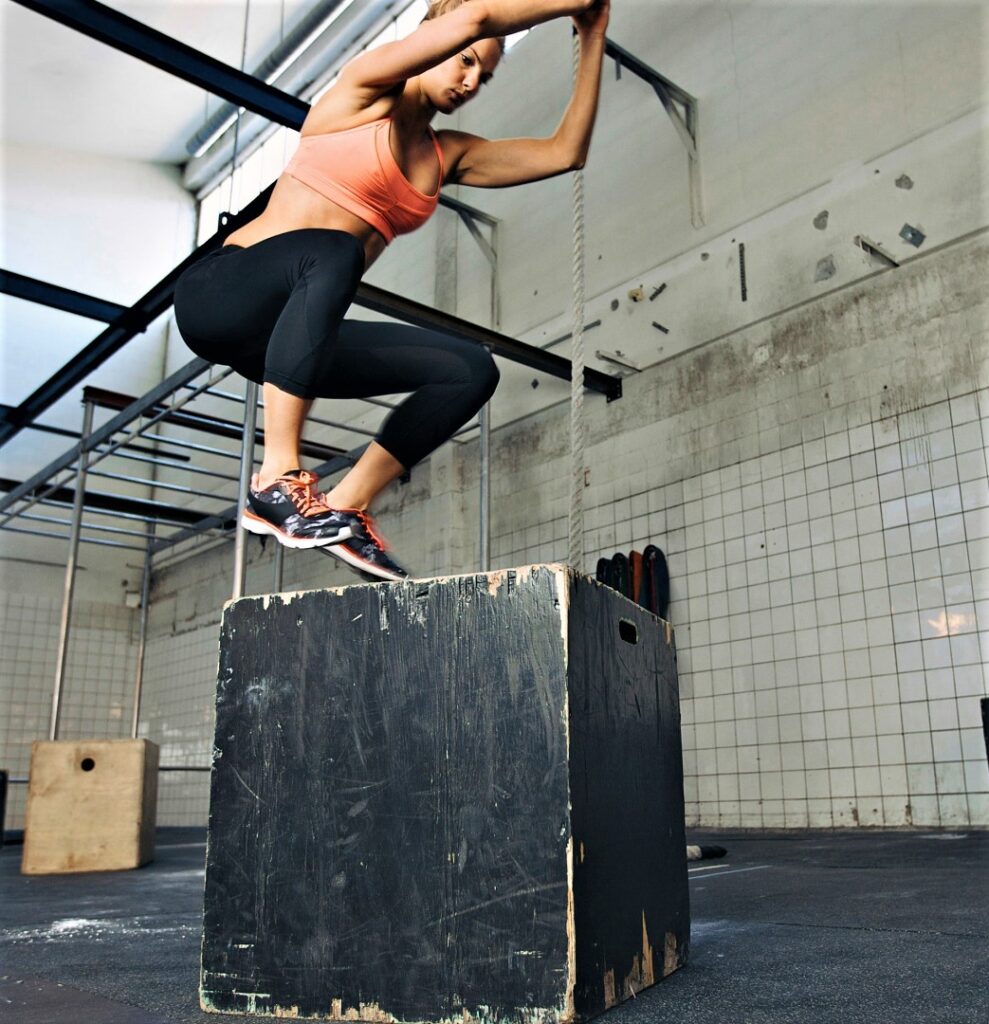What is circuit training? First, what it’s not. Imagine a typical workout in which you pyramid sets of bench presses or squats, relaxing for two or three minutes between each progressively shorter, heavier set. That’s like a slow jam mixed with brief bursts of heavy metal. Now, for what circuit training is, imagine a workout in which you never stop as you rush from one seemingly random exercise to the next, eight in all, each for at least 10 reps. And when you finish those eight you start all over again. And then again and again. That’s like a 140-beats-per-minute mix, constant movement, forever up-tempo, relentless.
Circuit training is that fast-tempo mix. It’s nothing like your typical workout, and, depending on your goals, that may be a great thing. Let’s explore circuit training and how to best incorporate it into your training.
CIRCUIT TRAINING DEFINED
A circuit usually consists of 4 to 10 exercises which together cover a wide area: upper body, lower body, or full body. Exercises are usually performed for at least 10 reps, and, unlike with giant sets, they may be selected to maximize the aerobic effect. So, compound lifts, like squats, are superior to isolation lifts, like leg extensions. And some exercises in a circuit, like burpees or battle ropes, may be done mostly to elevate your heart rate.

CIRCUIT TRAINING ADVANTAGES
Time Saver
Circuiting allows you to combine cardio and weights while also working broad areas together. In that way, it’s a tremendous time-saver. In fact, by circuiting, you can crank out an effective cardio/weights, full-body workout in under an hour. In contrast, if you hit each body part individually and tack a 20-30 minute cardio session onto each session, it might take 5-10 times longer than a single circuit session!
Fewer Workouts
Perhaps you’re traveling or otherwise just too busy to get to a gym more than once or twice weekly. Circuiting is a great way to squeeze in a whole-body workout plus cardio in a single gym session. You probably won’t gain muscle or lose fat circuiting infrequently, but you can maintain your current shape.
Taking A Break
Circuits are a change of pace from the grind of maximum-weight, high-intensity barrages. A month of thrice-weekly circuits may be just what you need between power cycles. Some trainers think of them as a working rest, allowing minor injuries to heal and the mind to clear before ramping up the intensity again with a more conventional weight-training routine.
Bonus Workout
It doesn’t have to be either/or. You can do circuits in addition to more typical bodybuilding workouts. For example, you can divide your body parts into four or five weekly workouts and then, on the fifth or sixth day, do a full-body circuit session. In this way, you hit muscles twice weekly. Everything gets worked individually but also worked again collectively on circuit day. This can also be a means of adding a new component to your training—for example, emphasizing explosive lifts, like sled pushes, power cleans, or box jumps.
POWER CIRCUITS
Most circuit training is not ideal for gaining size or strength long-term. The rest periods are too short and the primary focus is on continuous movement, not muscle stimulation.
But there is another way…
Power circuits are not aerobic. They’re not designed to torch fat. They’re meant to work the entire body with a combination of several compound lifts performed in a circuit.
HOW TO DO POWER CIRCUITS
◼️ Choose at least four exercises from these six: squat, bench press, deadlift, power clean, overhead press, barbell row. (The power clean and overhead press can be combined into the clean-and-press.)
◼️ Perform those exercises in a rotation, doing sets of 8-12 reps for four to six circuits.
◼️ With power circuits, you can rest up to a minute between exercises, though you should still maintain a brisk pace, stopping only long enough to almost catch your breath.

Power circuits are an excellent way of adding an extra workout to your weekly barrage, giving major muscles another reason to grow. Consider dividing your body parts into four sessions with a fifth day devoted to power circuits. (If you do this, schedule a rest day either before or after the circuit day or before and after.) Whether you choose power style or traditional, there’s nothing softcore about working the circuit.
CIRCUIT TRAINING BASICS
◾️ A circuit consists of several diverse exercises performed in succession.
◾️ Focus on maximizing reps and minimizing rest to significantly elevate your heart rate.
◾️ Choose compound exercises that together cover broad areas and do only bilateral exercises.
◾️ Because you don’t rest between exercises of a circuit, you may need to plan your workout so workstations are near each other.
◾️ Rest no more than one minute between circuits.
CIRCUIT TRAINING TIPS
◾️ Because you’re focused on broad, compound exercises, smaller body parts, like abs and biceps, may get no direct work.
◾️ Lifts, like the clean-and-press, which work the upper and lower body together are ideal for full-body circuits.
◾️ You can also add aerobic exercises, like burpees, battle ropes, and box jumps.
◾️ Working with two or more partners will help you keep dibs on diverse workout stations in a busy gym.
FULL-BODY CIRCUIT ROUTINE
Clean-and-Press — 10-12 reps
Squat or Box Jump — 10-12 reps
Dumbbell Incline Press — 12-15 reps
Burpee — 15 reps
Inverted Underhand Row — 10-15 reps
Deadlift — 10-12 reps
✷ Do 4-7 circuits without resting.
CIRCUIT TRAINING FREQUENTLY ASKED QUESTIONS
What is circuit training workout?
A workout that consists of only exercise circuits, made up of 4 to 10 exercises which together cover a wide assortment of muscles and may include some designed mostly to elevate your heart rate.
What is an example of circuit training method?
We have one sample circuit above. Here’s another, a four-exercise circuit that you may be able to do at home: pushup, burpee, pullup, box jump.
Is circuit training the same as HIIT?
No. HIIT (high-intensity interval training) is a cardio style that alternates higher-intensity periods with lower intensity periods. Circuit training is not necessarily a cardio-only workout, and it combines different exercises with no rest between them.
Is it OK to do circuit training every day?
It may be ok if the workout is brief (under 30 minutes) and includes mostly cardio exercises. If you do more traditional weight-training exercises and the same exercises each workout, we recommend one day of rest between circuit workouts.
Is circuit training aerobic or anaerobic?
Depending on the exercises you choose, it can be very aerobic or barely aerobic.
Is circuit training cardio or strength?
It’s generally done more for cardio, but, as mentioned above, you can do power circuits for strength.
Can you build muscle with circuit training?
Yes. Include more traditional weight-training exercises in your circuit and less cardio exercises.
Is circuit training a high-intensity form of exercise?
No. In theory, you could push your sets within the circuit to failure or beyond (making it high-intensity), but we don’t recommend this. Many hard trainers find circuit training a welcome reprise from or addition to their high-intensity, weight-training workouts.
Is circuit training low impact?
It depends on your exercise selection, but circuit training should be relatively low impact.
Related: Holistic Workouts: Complete Guide
















































